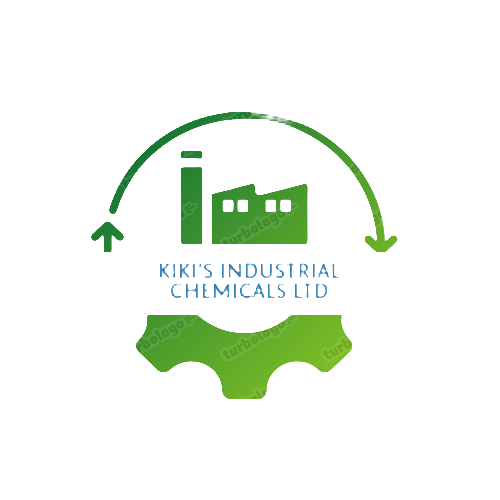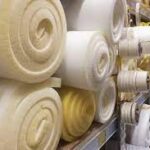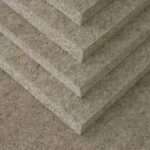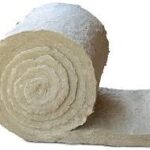INSULATION CHEMICALS & MATERIALS IN KENYA
Insulation chemicals are used to reduce heat transfer and increase energy efficiency in buildings. There are many types of insulation chemicals, and some of them are hazardous and toxic. Here are some of the most commonly used insulation chemicals and their characteristics:
Halogenated flame retardants
Halogenated flame retardants: These are used to make insulation materials fire-resistant. They are persistent, bioaccumulative, and toxic.
Halogenated flame retardants are a group of chemicals that contain bromine or chlorine and are used to prevent or slow down the spread of fire. They are widely used in industrial applications and can differ in their physical, structural, and chemical properties. Halogenated flame retardants act directly on the flame and interfere with the combustion process. They are said to act “in the vapor phase,” meaning that they actually interfere with the flame’s core. Antimony oxide is often used as a synergist for halogen compounds. However, halogenated flame retardants are known to be toxic and can contribute to elevated rates of cancer in firefighters. Nitrogen-based flame retardants are a group consisting of halogen-free commercial products such as melamine cyanurate, melamine borate, and ammonium.
Boric acid
Boric acid: This is a fire retardant used in cellulose insulation. It is non-toxic and has low flammability.
Boric acid, also known as hydrogen borate, is a weak monobasic Lewis acid of boron with the chemical formula H3BO3. It is a compound of boron, oxygen, and hydrogen that usually occurs as colorless crystals or a white powder, dissolves in water, and occurs in nature as the mineral sassolite. Boric acid is used as a fireproofing agent for wood, as a preservative, and as an antiseptic. It is used in the manufacture of glass, pottery, enamels, glazes, and more. Boric acid is also used as an insecticide, fungicide, and herbicide, and it is registered in the U.S. for these purposes. Boric acid and its sodium borate salts are pesticides that can be found in nature and many products. Borax is one of the most common products. The toxicities of boric acid and its sodium salts depend on the amount of boron they contain
Isocyanates:
Isocyanates: These are used in the production of polyurethane foam insulation. They can cause asthma, lung damage, and contact dermatitis
Isocyanates are a group of reactive, low molecular weight aromatic, and aliphatic compounds containing the isocyanate group (-NCO). They are widely used in the manufacture of flexible and rigid foams, fibers, coatings such as paints and varnishes, and elastomers, and are increasingly used in the automobile industry, autobody repair, and building insulation materials. Isocyanates are powerful irritants to the mucous membranes of the eyes and gastrointestinal and respiratory tracts. Direct skin contact can also cause marked inflammation. Exposure to isocyanates at work can cause asthma, and they can sensitize workers, making them subject to severe asthma attacks if they are exposed again. Isocyanates should be handled with care, and respiratory protection should be considered when working with them
Sodium borate
- Sodium borate: This is also a fire retardant used in cellulose insulation. It is non-toxic and has low flammability
- Sodium borate is a generic name for any salt of sodium with an anion consisting of boron and oxygen, and possibly hydrogen, or any hydrate thereof. It can be seen as a hydrated sodium salt of the appropriate boroxy acid, although the latter may not be a stable compound. Many sodium borates have important industrial and household applications, the best known being borax, which is a mineral and a salt of boric acid and occurs as hard odorless crystals, granules, or crystalline powder. Sodium borate is a naturally occurring compound composed of boron, oxygen, hydrogen, and sodium. Trace amounts are found in soil, water, and more. Sodium borate is used in cleaning, laundry, personal care products, and even children’s toys as a buffering pH adjuster. However, it is also toxic and can cause side effects.
Polystyrene in Nairobi Kenya
- Polystyrene: This is a plastic foam insulation material. It is lightweight, durable, and has good thermal insulation properties.
Polyisocyanurate in Nairobi Kenya
- Polyisocyanurate: This is a plastic foam insulation material. It is lightweight, durable, and has good thermal insulation properties.
Poly urethane in Nairobi Kenya
- Polyurethane: This is a plastic foam insulation material. It is lightweight, durable, and has good thermal insulation properties.
CORK
- Cork: This is a natural insulation material. It is renewable, non-toxic, and has good thermal insulation properties.
Wood fiber
- Wood fiber: This is a natural insulation material. It is renewable, non-toxic, and has good thermal insulation properties.
Sheep’s wool
- Sheep’s wool: This is a natural insulation material. It is renewable, non-toxic, and has good thermal insulation properties.
Hemp
- Hemp: This is a natural insulation material. It is renewable, non-toxic, and has good thermal insulation properties.
Fibre glass IN NAIROBI KENYA
- Fiberglass: This is a synthetic insulation material. It is lightweight, durable, and has good thermal insulation properties.
mineral wool IN NAIROBI KENYA
- Mineral wool: This is a synthetic insulation material. It is lightweight, durable, and has good thermal insulation properties.
Poly ester IN NAIROBI KENYA
- Acrylic sealants: These are used to fill gaps and cracks in insulation materials. They are durable and have good thermal insulation properties.










































































